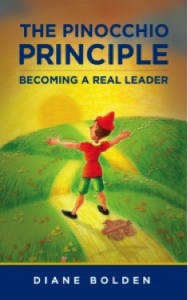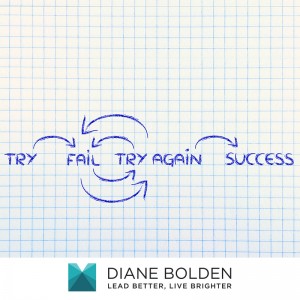Tag Archives: transformation
Moving Toward Mastery: 4 Tips for Overcoming the Beginner’s Dilemma
“Every master was once a disaster.”
I am all too familiar with that awkward, humbling stage that comes with learning something new – when you want to run with the stallions but feel more like a donkey. It’s a universal phenomenon, really. Ralph Waldo Emerson reminds us that, “Every artist was once an amateur.”
We can all learn a lot about our paths to proficiency by looking at the ways in which we have mastered things over the course of our lives – whether it is how to drive a car, play our favorite sport, or take up a new hobby. Upon reflection, I realized how I can transfer my learnings from one arena to the other.
(1) There is power in persistent practice.
Sometimes my yoga instructor demonstrates a pose that evokes a “you’ve got to be kidding” response from me. I always give it a try, and usually the first time I do I look a lot like I feel – completely inept. She managed to work one of those dreaded poses in for several weeks. But I gave it a shot every time, and I have to say it gradually became less awkward. Before too long I was actually able to hold the pose – even if only for a few seconds. And I realized the more I practiced, the better I would get and the easier and more fun it would become.
Isn’t that like life, though? Every day there are things you can sail through and there are those things that require practice and patience before you can feel even the least bit effective. But if you keep at it, one day you will surprise yourself with how far you have come. And everything that led up to that point will be worth it.
(2) Learn from and admire others, but don’t compare yourself to them.
As a novice, you watch people perform so that you can see how things are done. And even as you gain skill, you can still learn a lot from others’ examples. But the minute you begin to compare yourself, you will lose your focus and dilute your effectiveness. This is true regardless of whether comparing yourself to others makes you feel inferior or superior.
When we gauge how well we are doing by comparing ourselves to others, the energy and focus that is required to perform effectively becomes scattered. And if you do not believe you can do something, you will inevitably prove yourself right. On the other end of the spectrum, when you believe you are outperforming others and become a little too smug, your confidence can turn into arrogance, which shifts your focus from what you are doing to how others are perceiving you. And anything that is more focused on appearances than substance lacks foundation and eventually crumbles.
The best of the best gain their confidence from within – as a product of their effort, focus, and the results that come with effort and focus. They don’t need to compare themselves to other to know that they are good – or to learn that they can get even better.
(3) Lighten up and have some fun.
When we get all balled up in knots trying to make things perfect and avoiding every possible misstep, we risk becoming stagnant and playing small. Getting too attached to the results leads us to stiffen up and become consumed with needing things to happen in the exact way we want them to. Without flexibility, we lose our ability to bend and make the necessary course corrections that allow us to ultimately excel. If you ever look at the top performers in any industry, sport, or artistic endeavor you will notice that accompanying their intensity is an ability to relax into their game in such a way that it appears easy and natural. The ability to play at work is another mark of the master.
(4) Replenish yourself regularly.
In our frenetic lives, it is easy to forget about the importance of pausing every once in awhile to make the most of our experiences – whether by giving ourselves a needed break, or simply taking a moment to assess where we are going, to what degree we are still on course, and what, if any, course corrections are necessary. Being willing to invest our precious time into replenishing ourselves in this way pays handsome dividends – and sometimes the times we think we can’t afford to slow down are in fact the times we cannot afford not to.
The speed and effectiveness with which we move toward mastery is a direct result of the way in which we approach our challenges and opportunities. The Real Leader’s Guide to Freedom & Flow Group Intensive is a program designed to help you make a bigger impact while enjoying the process, both on and off the job. Though the spring program is now full, you can get on the waiting list for priority access to the fall program, kicking off in September. For more information, visit The Real Leader’s Guide to Freedom & Flow Group Intensive.
Suffering a Setback? Use it as a Springboard
“The spirit, the will to win, and the will to excel are the things that endure. These qualities are so much more important than the events that occur.” ~ Vince Lombardi
Winston Churchill once said, “Success is not final and failure is not fatal – it is the courage to continue that counts.” Thomas Edison offered, “Many of life’s failures are people who did not realize how close they were to success when they gave up.”
Their words lead me to contemplate the very meaning of the words “success” and “failure.” Perhaps they are nothing more than labels we use for experiences that could very well be vital stepping stones. Both words are loaded with judgment that compels us to move closer to one and further from the other. But what if they are simply two sides of the same coin?
Consider the following events in each of these people’s lives:
- It’s been said that Abraham Lincoln failed in business twice, had a nervous breakdown, and was defeated in eight elections.
- Walt Disney was fired by a newspaper editor who thought he lacked creative ideas.
- When he was young, Thomas Edison was told by his teacher that he was too stupid to learn anything.
- Soichiro Honda, the founder of Honda, was turned down by Toyota for an engineering job.
- Before becoming a successful actor, John Wayne was rejected by the US Naval Academy.
- Lucille Ball was dismissed from drama school with a note that read “Wasting her time… she’s too shy to put her best foot forward.”
- Steven Spielberg unsuccessfully applied to film school three separate times.
- Michael Jordan was cut from his high school basketball team.
- Baseball legend Babe Ruth struck out 1,330 times.
- The first novel of best-selling novelist John Grisham was rejected by 16 agents and 12 publishing houses.
- Before going on to sell millions of copies in 27 languages, Robert M. Pirsig’s book Zen and the Art of Motorcycle Maintenance was rejected by 121 publishers.
- Deca recording company turned down the Beatles, with the reason “We don’t like their sound, and guitar music is on its way out.”
This list could continue for pages. What these people have in common is that they didn’t let labels like “success” and “failure” define them. They didn’t allow the events in their lives (or their thoughts and judgments about them) to get in the way of their dreams or what they knew they were capable of. And their courage, perseverance and determination benefitted not only themselves, but countless others – many of whom came generations later.
Another of my favorite quotes is from a woman named Susan Taylor who said, “Seeds of faith are always within us; sometimes it takes a crisis to nourish and encourage their growth.” Using this same wisdom, perhaps what some call “failure” is actually a catalyst – or even a prerequisite – for what others call “success.”
What’s happening in your life right now? What if it is the very experience you need to get where you most want to go?
If you are interested in more tips for transforming your setbacks to springboards, I encourage you to check out The Real Leader’s Guide to Freedom & Flow Group Intensive, an exclusive twelve-week group mastermind/coaching program/online training course kicking off the week of March 20. The program is a blend of online leadership development, small group mastermind, and one-on-one coaching, and is limited to eight people. Sign up today!
Performance Alchemy: How to Combine Inspiration and Motivation to Rocket Launch Your Success
“The key thing to remember is not that we need to be fast but that we are running a race that has no finish line. So the fuel that drives us needs to be made of something substantial — something for the heart that the head can also follow.”
~ Vincent Kralyevich, American film producer, director, author, art director and composer
Have you ever had an idea that made the hair on your arms stand up?
Maybe it’s a dream that beckons to you – one that holds promise for your future and that of others as well. When you think of the possibilities, you may find yourself feeling light, energized, and connected to something greater than yourself.
This is what inspiration feel like.
It is buoyant and powerful. Simple, yet strong. And it is contagious. Inspired action tends to touch others in a way that activates something inside of them as well. It connects them not only to you, but also to themselves. I like to think of inspiration as a pull – like a magnet that draws us toward something and gives us the power to bridge the gap – even if we aren’t sure exactly how to do it. Inspiration is something we receive and it comes to us when we are receptive to it. It requires trust, faith and patience.
Sometimes inspiration gets blocked.
What gets in the way of inspiration is our doubts, fears and faulty assumptions about what we can or cannot do, or what is even possible. These doubts are like layers of stuff that dilute the magnetic force of inspiration. Inspiration still beckons to us, but something stands in our way. This is where motivation comes in. It is something we summon up inside ourselves to get us to overcome the obstacles that are in front of us. And as leaders (regardless of your vocation, title, or role), it is something we often try to summon up in others to get them to do the same.
Motivation often takes the form of the carrot or the stick.
What gets us off the dime when we are balled up in our own fear is the willingness and the will to take action. Where inspiration is the pull, motivation is the push. The word motive is derived from motivation. Our motives can be in service to a higher good, or they can be in service to ourselves alone.
When motivation is aligned with inspiration, miracles can happen.
But when it is not, we will find ourselves feeling out of sync. Inspiration (a higher calling) without motivation (the will to act on it) leaves us feeling stagnant, stuck, and/or unfulfilled. When we refuse to answer our calls to greatness and play small instead, it is often because we have let our fear and doubt get the better of us. Though we may be very busy, we will likely feel as though we are not accomplishing anything of great significance.
Motivation serves us best when it works through obstacles in our own thinking that get in the way of acting on our inspiration.
Motivation without inspiration feels a lot like driving a car without power steering. Or it can be like trying to run through mud. It requires a lot of effort and strength and leaves us feeling exhausted. When motivation serves a higher purpose (that provided by inspiration), the load is lightened and the way becomes clear. But when the object of our desire is one that derives solely from our ego’s need for things like power, prestige, control, approval, or wealth, the push of motivation is not aligned with the pull of inspiration and we stray off course. That’s when things get difficult – we may feel as though we are exerting a lot of effort but not really getting anywhere.
Sometimes motivation and inspiration begin in alignment and then gradually become disconnected.
We start out feeling in sync, making great progress and experiencing a state of flow, and then hit a bump in the road. The bump may be a fear or some other kind of assumption that we need to examine and disempower before we can move on. Or, it may be that we simply need to wait awhile.
The cool thing about inspiration is that it comes from a higher source.
One that sees a bigger picture than we do. Sometimes there will be delays that we do not understand. Our egos can become impatient and steal the show – trying to push through these barriers with sheer force and exhausting us and everyone around us in the process. And once our egos are in charge, things have a way of deteriorating. Our motivation (or motive) mutates from being in service to a greater good to being in service to ourselves – or some ego need.
What do you do when things stall out?
It can be tough to discern what kind of action (or inaction) is required when we encounter an impasse. But if we get quiet, we can tap our source of inner wisdom to find the answers we need. When we purify our motives (motivation) so that they are in service to a higher calling (inspiration) we get back on the path that leads to greatest fulfillment for ourselves and everyone around us. And using motivation to remove the blocks that stand in our way will ensure that we actually make progress on that path and bring our greatness into the world in a way that inspires others to do the same.
My life’s work has largely been around unleashing inspiration in my own work and helping others to do the same.
And I’m so excited about a new program I’m about to launch where I will partner with a very small group (limited to eight people) in a highly transformational process. If you are interested in delving deeper into how you can infuse your life and leadership with inspiration and experience a greater sense of meaning, higher level of performance, and lasting fulfillment, I encourage you to check out The Real Leader’s Guide to Freedom and Flow Group Intensive, an exclusive twelve-week group mastermind/coaching program/online training course kicking off on March 20. Sign up before March 10 and receive a 15% early bird discount!
Why Losing Your Passion for Work is a Bigger Problem Than You Might Think
Has work become a bit of a grind?
You might tell yourself that work isn’t supposed to be fun – that’s why they call it work. But when you spend the majority of your waking hours just getting through the day or counting down to the weekend, you have a bigger problem than you might think.
Most of us don’t start our professions that way, but over the years disappointment, frustration and pressure can lead to disillusionment, disengagement, and burnout. Lack of passion and joy on the job will hit you hard in three major areas:
- Personally
- Professionally
- Organizationally
Let’s take a look at how work becoming a grind affects you personally.
You might think that as long as you can enjoy yourself after five (or six, or seven) and on the weekends, you will be just fine. But when you spend the better part of your day on a kind of autopilot, feeling like you’d rather be somewhere else, it’s hard to keep that negativity from spilling over to the rest of your life.
You may find yourself irritable, preoccupied, exhausted or just brain dead.
And whether you know it or not, that infringes on your ability to fully enjoy the things, experiences, and people in your personal life that you hold most precious.
You may even have a decent paycheck and enjoy a position of influence and status in your organization. But when the work you spend more of your waking hours doing is a continual grind, it’s easy to begin feeling as though life itself lacks meaning and fulfillment.
Perhaps you’ve made the decision (consciously or unconsciously) to put your personal happiness on the backburner in the name of your professional success and upward mobility.
Well, unfortunately lack of passion and joy on the job has a negative impact on your professional effectiveness as well. Let’s take a closer look at that.
Productivity
You can try all you want, but when you are exhausted and overwhelmed you will work very long days spinning your wheels without getting a whole lot done. You may think you just don’t have enough time to finish everything on your plate. And while it is true that time is finite, your real problem is lack of energy.
Creativity and Problem Solving
Lack of energy makes everything take far longer than it should. It blocks you from accessing your creativity, leads you to unnecessarily complicate things, and pushes the solutions to your problems just out of reach. All of this will contribute to a feeling of being unable to get important things done, which will cause you to work longer hours and become even more exhausted.
Influence
If your job requires you to have even the slightest degree of influence over others, consider this: getting someone excited about doing something is largely a matter of sharing your enthusiasm. But enthusiasm isn’t something that is easily feigned. And when you try to fake it, you will come across as being disingenuous, which will keep others from trusting you.
It’s exceedingly difficult to get anyone — whether they are your coworkers, your direct reports, or your customers — to become excited about something you can’t muster up the passion for yourself. And while we’re on the subject of coworkers, direct reports, and customers, let’s talk about the impact lack of passion and joy on the job has organizationally.
If you are a leader of others — whether you know it or not — you are setting the tone for the entire organization.
If you are not feeling emotionally committed, passionate, enthusiastic and connected to your work and the people you partner with to do it, chances are the people you lead will not be feeling it either.
Employee Engagement
Research indicates that as much as 70% of U.S. workers are not engaged. That translates into people who are physically present on the job, but not emotionally or mentally all there. When people are disengaged they go through the motions, doing as little as possible to fly under the radar.
The Cost of Complacency
This complacency causes all kinds of problems, including low quality products and services, plummeting productivity, low creativity and innovation, strained customer relationships, intra and interdepartmental conflict, absenteeism, high turnover, and ultimately low profitability. It does little to attract key talent, and certainly does not contribute to having a competitive advantage in the marketplace.
What does that have to do with you?
Engaged employees are people who feel part of something bigger than themselves — an organization with a shared purpose that has meaning to them. And they want to work for a boss who is turned on and tuned in to the organization and them as people.
If you have no passion or joy for your own work, you will be hard pressed to inspire it in others. In fact, you could end up unwittingly sucking the joy from those who already are engaged, and/or driving them to look for work elsewhere.
In Summary
Losing your passion and joy at work has significant implications for you on three different levels:
(1) Personally. You just can’t turn it on and off like a light switch. If you are feeling a lack of passion and joy at work, chances are good it will translate into your personal life, like a dark cloud that follows you around despite your insistence that you can shoe it away. You deserve more out of life than that.
(2) Professionally. The overwhelm, frustration, and exhaustion you feel is likely keeping you from performing at your best. While you may be working very long hours, your problem is not lack of time but rather lack of energy. Lack of energy is accompanied by lack of creativity, problem solving and influence. Energy comes with passion and joy. And when passion and joy are lacking, your performance will be lacking too.
(3) Organizationally. Just as passion and joy can be contagious, so too is the lack of it. A leader’s lack of passion and joy gets translated into disengagement, both for the leader, and the followers. Disengagement negatively impacts productivity, innovation, customer satisfaction, employee recruitment and retention — and ultimately profitability.
So if you feel like work has become a grind — but not a problem you have the luxury to address right now, think again. It may well be that you can’t afford not to. Rejuvenating your passion and joy on the job is easier than you think. And it doesn’t necessarily mean that you have to find another job.
Consider making reigniting your passion at work a priority.
And if you are interested in receiving some support and guidance, I encourage you to check out The Real Leader’s Guide to Freedom and Flow Group Intensive, an exclusive twelve-week small group mastermind/coaching program/online training course kicking off on March 20. Sign up before March 10 and receive a 15% early bird discount!
Ringing in the New Year: Why Looking Back is as Vital as Looking Ahead
There is something magical about being at the threshold of a new year.
It is like climbing to the top long staircase to find ourselves on a landing, standing before a large glimmering door just waiting to be opened. As we look down, we realize how far we have climbed to get here. Yet, we cannot help but wonder what lies behind the door.
Often we underestimate the amount of growth we have achieved.
It’s important to take some time to reflect on the unique combination of experiences that have led to both successes and disappointments and what we have learned from them. When we do, we often gain the insight that helps us become aware of what we most need to do from this point forward.
I often work with people who feel they are ready for a change, but aren’t sure what that change should be. They aren’t necessarily miserable in their jobs or other areas of their lives – they just long for something that will fill them up in ways they haven’t been fulfilled in the past.
When I coach people who feel this way, they often want me to tell them what the next best step is – give them the answer, or perhaps a step-by-step process that will lead them to find what they seek. Of course, no person has these answers for another. Our greatest challenge and opportunity is to find them for ourselves.
Each of our lives has a story with perfect order and meaning.
As within a novel or screenplay, each character has a specific relationship to the main character and every scene has some relevance to his growth and evolution. There will be victories and disappointments, as well as twists and turns that transition us from one to another and back again.
We will have occasion to laugh, cry, and experience a myriad of other emotions that are somewhere in between. And as a result of this perfect combination of events and mini-plots, we discover ourselves to be better people.
When we are reading a book or watching a movie, the perfect order is often easier for us to see than it is for the characters enmeshed in the stories we are watching. Yet, the mystery and intrigue, the humor over each misstep, and the courage we see the characters exude to find their way give substance to the story and allow us to leave the book or the theatre feeling moved or inspired in some way.
As you reflect on 2016, can you identify your story’s most pivotal turns? What did you learn from them? Think about your character sketch. What are the endearing qualities you have that make you unique and special? How can you leverage them to build on the previous events to create a story worth telling?
Think also about the people that surround you. In what ways are they helping you grow? What are they teaching you about yourself – whether in joyful or painful ways? And what are the qualities they possess that are similar to and different than yours? How do you compliment each other, and what might it be that you can create together?
You now sit at the threshold of another chapter in your story.
Contemplate what you have already experienced and ask yourself how you might build upon it to add a bit of intrigue and adventure. Identify the ways that you could add a little lightness and humor. Think about the interplay between the characters and how you could spice things up a little.
We have each been given the makings of a beautiful tale. Open your eyes and survey them the way you would the perfectly planned detail of your favorite movie or novel. Give yourself completely to the adventure, the possibilities, and the humor in your life.
Then find a way to revel in the joy of living it.
As you turn the page to your life’s next chapter, consider emphasizing the experiences that help you gain clarity, wisdom, and momentum for years—or chapters—to come. Stay tuned for more insight into those moments and information on my upcoming online course and group intensive, The Real Leader’s Guide to Freedom and Flow. Click here to get on the waiting list and get first priority (with no obligation) at the limited spots that will soon be available.
Harness the Power of Possibility in Your Work and Your Life
“All our dreams can come true, if we have the courage to pursue them.”
Over the holidays, I had the delightful experience of traveling to Disneyland with family.
Every time I go there, it is like stepping into an alternate reality—one where the stresses and anxieties of the week before simply dissolve and the child in me emerges.
I am mesmerized by every intricate detail so carefully attended to by the multitude of people that make Disneyland what it is—from the enchanting castles and belly-dropping rides, to the perfectly manicured gardens and the warm smiles and tireless energy of every cast member.
And I can’t help but revel in a deliciously goose-bump-building thought.
All the wonder, delight and magic of this place—as well as everything that is associated with it (the movies, cartoons, storybooks and associated media)—ALL OF THIS began with a single thought in the mind of a man who took action to make it real.
I don’t know a lot about Walt Disney, but I imagine he was gripped by an idea—a dream that captured his heart and burst inside of him until he was compelled to gather the people and resources to make it happen.
This guy had a vision that couldn’t help but be embraced by others.
It spoke to their hearts and their spirits, and allowed them to be a part of something that does the same for everyone who encounters it. Disneyland is the “happiest place on earth” because it brings out the best in everyone who experiences it. It unleashes the magic each of us carries somewhere deep within us, and the most traditional of fairy tales are about that very subject. Even the performers on the various stages throughout the park sing refrains about looking within to find our heroes. What an amazing creation!
We all get inspirations from time to time. And the more we act on them the more we seem to receive them.
Ideas are a dime a dozen. When was the last time you got one that gave you goose bumps? And what did you do to take it to the next level of creation? Were you overwhelmed, thinking it was too big, or unrealistic to actually achieve? Perhaps it is too big for one person. But what if you were able to create a vision like Walt Disney did, that resonated in the very core of people who would gladly partner with you to make it real?
You have something inside of you that is waiting to be unleashed into the world.
The very act of doing it will rock your world, and that of others as well. Maybe it isn’t a multimillion dollar theme park, or a screenplay, or an organization. But whatever it is will carry the unique essence of you—who you are—and the compilation of everything each of your individual experiences has prepared you for. And if you bring it forward with the intention of making the world a better place, you will.
Who are you to deny that you are meant for greatness?
The beginning of every new year brings with it questions of what we most want to create in our lives and our work. If you are interested in strategies for better connecting with your vision and taking steps to bring it to fruition in a way that feeds and fulfills you, stay tuned for more information on my upcoming online course and group intensive, The Real Leader’s Guide to Freedom and Flow, or click here to get on the waiting list and get first priority (with no obligation) at the limited spots that will soon be available.
How to Survive (and Thrive) in Change and Chaos
Many of us are experiencing a great deal of pressure, anxiety and change.
The holidays are upon us. The leadership of our country is transitioning. And many are in the midst of personal or professional change as well. Frustration and turmoil are common responses to this kind of uncertainty and disorientation, leading to exhaustion and hopelessness. But consider this as you think about things that may feel as though they are spinning out of control…
What if the only thing truly standing in your way of peace, productivity, and purpose – was your thinking?
One of the key attributes embodied by extraordinary leaders in all walks of life is encapsulated in the word “responsibility” – not just in a moral or ethical sense of being accountable for our actions, but also remembering that there is wisdom in recognizing that we have the ability to choose our response. That response we choose will have a resounding impact on ourselves and everyone around us.
Here are four tips to help you move gracefully through change and chaos:
(1) Identify what is within your power to influence.
The greatest change agents start by recognizing what they have to work with before identifying change that can be sustained. They don’t waste their time worrying about things that are truly out of their control, like changing the weather. Instead, they focus their attention and energy on those things that they can influence. The greatest leaders know that the most powerful and sustainable change must start from within themselves.
(2) Recognize your stories.
“We are not troubled by things, but by the opinion we have of things.” – Epictetus
The thing that fascinates me about a seemingly chaotic state of affairs is not so much what is happening, but the stories we are telling ourselves about what it means and the impact those stories are having on the way we are responding to it. When we react to things with fear, we end up amplifying what we are afraid of and add to the anxiety. Our fears drive us to act in ways that keep us from acting on our intuition and finding the answers that will truly serve us. Sometimes, we end up behaving in ways that make our fictional stories become real.
As an example, when you are feeling so overwhelmed that you question whether you’ll get all the important things done, you are likely to approach things in a way that draws them out – perhaps by procrastinating, making things more complicated than they need to be, or using more energy to resist and worry than it would take to actually get things done.
(3) Think of the worst-case scenario.
Our rational minds want answers and security. They need to figure everything out and almost automatically occupy themselves with trying to sort through data to arrive at conclusions. The problem is that our minds are plugging imaginary variables into the equation that end up further exacerbating the anxiety we are already experiencing. When they are done with one variable, they plug in another and the churning continues, leaving us with an uneasiness that keeps us on edge.
In the grip of this madness, sometimes the best thing you can do is indulge your mind with a variable that will allow it to do its thing. Go ahead and plug in the worst-case scenario. If the worst possible thing happened, what would you do? Allow yourself to sit with that question for awhile. Let the fear move through you and keep asking the question, what would I do that would allow everything to be OK? If you sit long enough with your question, you will arrive at some workable alternatives and reconnect with that part of yourself that is strong, resourceful and resilient.
(4) Now, come back to the present.
Armed with the knowledge that you will be OK even if the worst possible thing happens, you can come back into the present and recognize your fearful thoughts for what they are – fearful thoughts. One of the best pieces of advice I ever got, which I pass along frequently, is don’t believe everything you think.
In the present moment, devoid of your stories about variables that are truly unknown, you are OK. And when new events begin to unfold, if you stay in the moment and access your inner wisdom, you will know exactly what you need to do – or not to do – to be OK then too. And as you go about your daily life in this way, your calm resolve will permeate your interactions with others and through your example, you will help others to rise to their challenges in ways that unearth the greatness in themselves as well.
Interested in additional strategies for navigating change, challenge, and uncertainty with effectiveness and grace? Stay tuned for more information on my upcoming online course and group intensive, The Real Leader’s Guide to Freedom and Flow or click here to get on the waiting list and get first priority (with no obligation) at the limited spots that will soon be available.
 The above article contains excerpts from my book, The Pinocchio Principle: Becoming the Leader You Were Born to Be, available on Amazon.com and BarnesandNoble.com.
The above article contains excerpts from my book, The Pinocchio Principle: Becoming the Leader You Were Born to Be, available on Amazon.com and BarnesandNoble.com.
Could You Be in the Presence of Greatness?
Who is your favorite performer?
Some of the most memorable performances I’ve had the opportunity to enjoy have been Springsteen concerts. The Boss. I’ve stood in the sold out stadiums before the show started along with thousands of other people waiting eagerly for the music – and the magic – to begin.
And Springsteen really does create magic. In a matter of minutes, he seems to effortlessly transform the entire building and everyone in it into a kind of portal that vibrates with possibility, energy, and spirit. Throughout the rest of the evening, he takes his audience right into the music with him and allows everyone to become a part of it.
I have never left a Springsteen concert feeling anything less than incredibly inspired and somehow renewed – as though some part of me I didn’t even know I had woke up while I was there and begged to be released into the world.
A Curious Thought…
The last time I saw Bruce in concert I was musing over the fact that he, like all of us, has at one time or another most likely ordered a hamburger at a fast food joint or stood in line at the grocery store. And I reveled over what it would be like to be standing there behind him – perhaps before he recognized his own inner genius and believed in it enough to write and record the music that would inspire others to give life to their own.
Would I Know That I Was Standing in the Presence of Greatness?
Could I somehow feel it? Or would I move through the rest of my day unaware of how close I’d come to magic? And then I began to wonder about the people I actually do stand in line behind in the grocery store these days. Who’s to say that one of them isn’t destined to touch the lives and transform the worlds of many as well with their own unique talents and passions?
Do You Know Greatness When You See It?
In December of 2007, the Washington Post persuaded Joshua Bell, one of the finest classical musicians in the world to be part of a social experiment. On a cold January morning, this internationally acclaimed virtuoso stood leaning against a wall next to a trash can in a Washington D.C. metro station with a baseball hat on his head playing some of the most intricate pieces ever written with a violin worth over $3 million dollars.
Over the course of the forty-five minutes that he played, a total of 1,097 people passed by this musician who only two days prior played a sold out theater in Boston’s Symphony Hall where the seats averaged $100. Only seven people stopped and stayed – most of them only for a minute or two. Twenty seven gave money, mostly change, for a total of $32 and some cents. He ended each piece with no applause, no acknowledgement of his performance – or even his existence.
If people could be in the presence of someone like Joshua Bell while he was performing without stopping to appreciate and savor it for even a moment, perhaps it is also feasible that we are in the presence of greatness every day in some way – without even knowing.
It could be in the person who serves you your morning coffee, the guy in the cubicle next to you, one of your own children.
Maybe it could even be the person who stares back at you in the mirror.
How to Embrace Your Brilliance (without becoming arrogant)
The lights are dimming and the crowd begins to hush.
Music blares from all corners of the dark, expansive room. A spotlight illuminates the stage and cuts a circle in the red velvet curtain that falls from the ceiling above. In front of that curtain are proud parents and antsy siblings squirming in their seats, eager to be entertained. And behind it are nervous school children with hearts pumping and nerves tingling.
Throughout their grade school years each of my kids have appeared in a variety of shows along with many of their friends and fellow students. They practiced for months. And I was one of a myriad of parents that toted children back and forth from rehearsal to rehearsal where the kids gradually perfected their acts and readied themselves for the spotlight. Finally their time would come.
As with every talent show, there were those who burst onto the stage with contagious energy and bright smiles, soaking up every ounce of the experience. And there were others who walked onto the platform and suddenly shrunk inside themselves, painfully aware that an entire auditorium of people were staring at them, watching and waiting expectantly.
I think every one of us has likely been in both categories at one time or another.
Maybe not in a talent show, or on any kind of stage at all. But in our own everyday lives. In the theatre of our work, in the arena of our interaction with others — colleagues, customers, bosses, friends and acquaintances. Sometimes we rise to the occasion and we are present, effusive, bright and shining with enthusiasm and warmth. And other times, perhaps we sink inside ourselves — intimidated, nervous, awkward and doubtful.
In the latter scenario, there is no judge more critical than the one that lives in our own heads. Allowing it to hijack our attention, we quietly exit the scene while our bodies remain, vacant and taking up space. We nod our heads and smile, hear what others say and even comment sometimes. But we are far more engaged in an internal dialogue that has us believing we are not good enough, that we must be a little more of this or less of that. It has us planning and evaluating what we will say in response to a person who hasn’t even finished speaking, their words eclipsed by the roar of preoccupation going on between our own ears.
This is a dismal state to be in.
In the midst of all the cruel self-judging, that part of us that is brilliant and loving, warm and engaging in whatever way is uniquely ours is dismissed. Or perhaps disallowed. How could we let it come forth while we banter about in our heads that we need to be anyone other than who we really are?
At the variety shows, I really don’t believe the audience would judge a poor kid standing speechless or stuttering at the edge of the stage — but rather would cheer him on, showering him with beams of encouragement and love, silently wishing for him to loosen up, forget about the audience and have a little fun and just be himself. And perhaps it is that way in our arenas as well.
When we withhold ourselves, we cheat others of knowing the brilliance of who we really are.
But before we cheat them of it, we cheat ourselves. Many of us are taught and conditioned to be humble and avoid the appearance of arrogance. But we confuse arrogance with self-love, which is actually a prerequisite to humility. True arrogance is the product of someone who has no self-love, and tries desperately to convince others he is superior and worthy of the very thing he denies himself of.
True humility occurs when we embrace our own greatness and love ourselves.
A healthy self-love keeps us from having to worry about how we are coming across or what others think of us, because we already know we have value. In embracing our own value and allowing our brilliance to shine, we light the way for others to do the same.
It is this brilliance that will transform our world.
It brings with it the creativity and ingenuity to rise up to our challenges and allow us to do things we never thought we could. Far from being self-absorbed, sharing our brilliance in this way is the most generous and loving thing we could do for others.
But before we can do it for them, we must do it for ourselves.
So the next time you find yourself engaging in a vicious dialogue that has you believing you are anything less than who you are and keeps you from bursting onto the scene, recognize that for what it is — an old pattern that isn’t doing you or anyone else any favors. The less you feed that dialogue, the less “self absorbed” you are and the more generous you can be with your brilliance.
The audience begs you: come onto the stage, forget that you are being watched, have a little fun being who you really are — and show us all how to truly shine.
Are You On the Verge of Transformation?
Do you ever feel like you are in the middle of some kind of transformation, but not yet clear on exactly where you are going and what form things are going to take? Speaking from my own experience, it can be a bit unnerving when you are in the thick of it. You may feel as though you’ll never find your way through.
They say it helps to find inspiration from those who have gone before you. On that note, this week’s video post (which I filmed a few years ago when my daughter was still quite young), features a caterpillar.
I hope you enjoy it.









